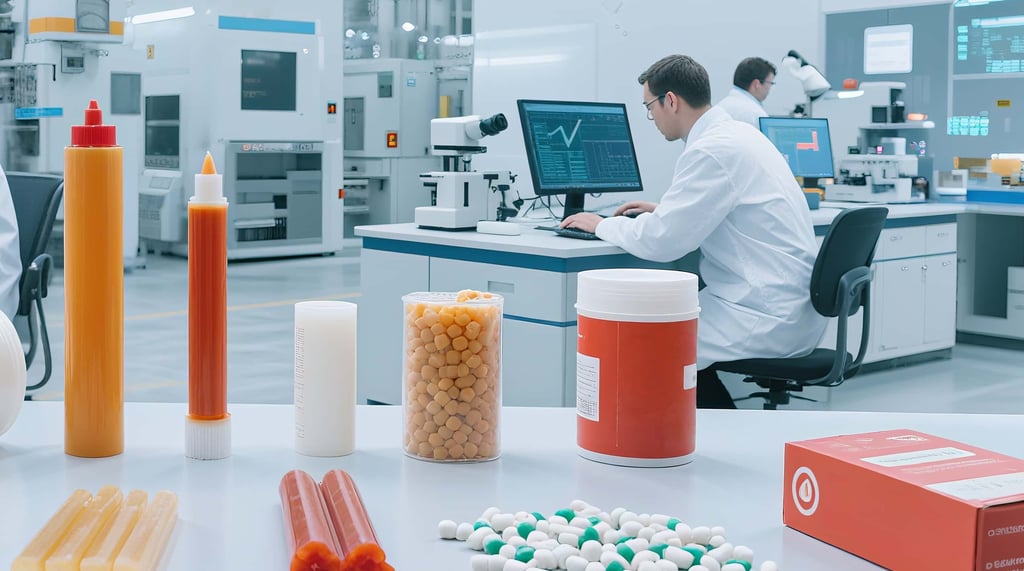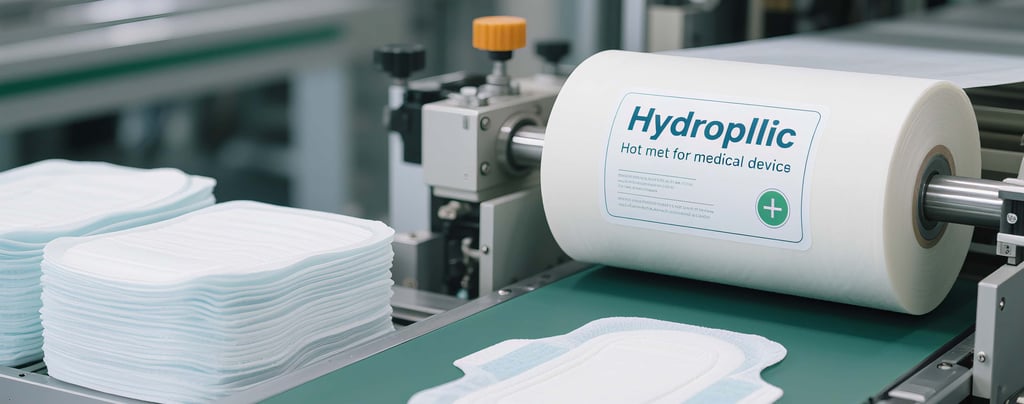China's Hot Melt Adhesive Industry: Current Status and Future Trends
7/15/2025


China's hot melt adhesive industry has undergone explosive growth over the past two decades, driven by technological advancements, expanding applications, and strict environmental policies. As a key player in the global market, China now leads in production and consumption while navigating a transition toward high-end innovation. Below is a comprehensive analysis of its current landscape and future trajectory.
1. Market Size and Growth Dynamics
Domestic Expansion: China’s hot melt adhesive market grew at an average annual rate of 17.8% over the past 20 years, far outpacing GDP growth. In 2023, sales reached 1.6159 million tons (up 12.89% year-on-year), solidifying its position as the world’s largest consumer.
Global Outlook: The global market is projected to reach $8.5 billion by 2025 and $11.8 billion by 2032, with China contributing significantly to this growth. Over the next five years, China’s demand is expected to maintain a 15% annual growth rate, driven by disposable hygiene products, tapes, and labels.
Export Momentum: China’s hot melt adhesive exports have surged at a 22% average annual rate, reflecting improved quality and international competitiveness. In the first half of 2025, exports rose 18.46% year-on-year to 637,800 tons, while imports declined, signaling accelerated domestic substitution.
2. Product Structure and Technological Innovation
Traditional Dominance: EVA (ethylene-vinyl acetate) and SBS/SIS (styrene block copolymers) still account for 90% of China’s output, widely used in packaging, footwear, and textiles. However, these low-end products face pressure from rising environmental standards.
High-End Breakthroughs:
Reactive Hot Melt Adhesives (PUR): Boasting superior heat/chemical resistance, PUR adhesives are gaining traction in automotive (battery bonding) and electronics (5G devices). Domestic firms like Huitian New Materials have entered Apple and Huawei’s supply chains, with PUR market growth exceeding 20% annually.
Functional and Bio-Based Solutions: Innovations include conductive adhesives for electronics, biodegradable variants for sustainability, and nanocomposite formulations for aerospace applications. A recent breakthrough by Beijing Forestry University developed a bio-based hot melt adhesive from wood byproducts, achieving 30 MPa bonding strength (surpassing epoxy resins) with 10x reusability.
Low-Temperature Formulations: Operating at 110–130°C (30°C lower than traditional products), these reduce energy consumption by 15% and protect heat-sensitive materials like PE films.
3. Environmental Policies and Industry Transformation
Regulatory Push: Stringent regulations under China’s Air Quality Improvement Action Plan and New Pollutant Control Work Plan mandate reduced VOC emissions, driving the replacement of solvent-based adhesives. Hot melt adhesives, with their 100% solids content and zero VOCs, are now preferred in packaging, furniture, and construction.
Sustainability Focus: Bio-based and recyclable formulations are gaining momentum. For example, PUR adhesives are increasingly used in electronics due to their eco-friendly profiles, while bio-based alternatives address reliance on petrochemicals.
4. Application Expansion into Emerging Sectors
Electronics and 5G: Miniaturized devices require precision bonding. PUR and conductive adhesives are critical for flexible circuit boards and semiconductor packaging, with China’s mobile adhesive market exceeding ¥100 billion (approximately $13.8 billion) in 2024.
New Energy:
Photovoltaics: EVA/POE resins for solar panel encapsulation saw 24.8% growth in 2022, reaching 780,000 tons.
EV Batteries: High-strength, heat-resistant adhesives are essential for battery module assembly, aligning with China’s EV manufacturing boom.
Medical and Hygiene: Disposable products (e.g., adult incontinence pads) and medical devices (e.g., wearable sensors) drive demand for hydrophilic and biodegradable formulations.
5. Competitive Landscape and Market Consolidation
Multinational Dominance: European and American firms (e.g., Henkel, H.B. Fuller) control 70% of China’s high-end market, particularly in automotive and electronics.
Domestic Rise:
Scale Expansion: Companies like Kangda New Materials, DOMIL Meltbond (annual sales >10,000 tons) are leveraging economies of scale.
Technological Catch-Up: Domestic players are penetrating high-end segments. For instance, Huitian’s PUR adhesives now meet automotive-grade standards, with 50% localization expected by 2025.
Market Rationalization: Over 100 small-scale domestic firms face elimination due to weak R&D and price competition. The industry is consolidating around 20–30 key players focused on quality and innovation.
6. Raw Materials and Supply Chain
Localization Progress: Domestic production of SBS, SIS, and petroleum resins has expanded, reducing import dependency. However, EVA and APAO still rely on imports (30% of total materials in 2006), though this share is declining as domestic alternatives emerge.
Cost Pressures: Volatility in petrochemical prices affects margins, prompting shifts toward bio-based feedstocks and vertical integration (e.g., Kangda’s acquisition of Dalian Qihua for upstream control).
7. Regional Development and Future Outlook
Coastal Leadership: The Yangtze River and Pearl River Deltas dominate high-end production, driven by advanced manufacturing clusters.
Inland Growth: Inland regions like Chengdu-Chongqing and Anhui are attracting production due to lower costs and emerging electronics/new energy hubs, though coastal areas remain innovation centers.
Long-Term Trends:
High-End Transition: By 2030, bio-based adhesives are projected to account for 30% of the market, while functional/reactive products will become mainstream.
Global Competitiveness: China aims to nurture world-class brands through R&D investments and strategic partnerships, challenging multinational dominance in sectors like electronics and aerospace.
China’s hot melt adhesive industry is at a pivotal juncture, balancing rapid growth with environmental sustainability and technological upgrading. While traditional products still dominate, the shift toward high-performance, eco-friendly formulations—coupled with expanding applications in electronics, new energy, and medical sectors—will define its future. With policy support, domestic innovation, and market consolidation, China is poised to lead the global transition to a greener, smarter adhesive economy.


NEWS LETTER
Latest series updates
Exclusive promotion offers
Copyright© 2010-2025 DOMIL. All rights reserved.
Manufactory&Capabilities


Contact
sales01@meltbond.com
+86 75522951009
+86 13008887698
admin@meltbond.com
